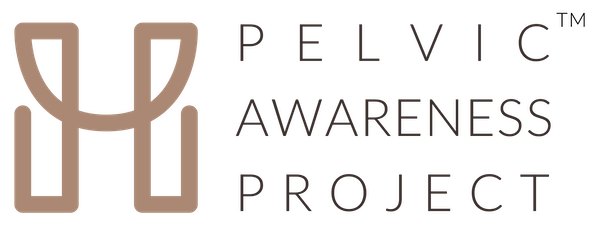Most women have experienced a “little leak” at some point in their lives.
The occasional accidental drip of urine may be common, but if it happens on a regular basis, it’s the sign of a problem that can be treated. The same is true if you suffer from leaking stool.
Recurring leaks are known as incontinence, which has different causes and takes different forms. It’s a condition impacting more than 50% of women in the United States.1 If you’re one of them, you’re not alone! Don’t accept it as a “normal” part of aging, because it’s not. You can and should seek treatment for incontinence.
Let’s explore this common, annoying, and often serious health condition.
What is Incontinence?
The meaning of incontinence is derived from continence, which is the ability to control your bladder and bowel. Incontinence, then, is when you suffer from an involuntary loss of bladder and/or bowel control.
Urinary incontinence is when you have involuntary loss of urine from the bladder. The accidental loss of feces from the bowel is known as fecal incontinence. These are common conditions that can be managed, treated, and sometimes cured.2
Types of Incontinence
There are also different types, and causes of incontinence:3
1. Stress Urinary Incontinence or SUI is when you leak when you cough, sneeze, or lift, which puts pressure on the bladder. It’s very common, and most often caused by weakened pelvic floor muscles, the hammock-like structure that holds the pelvic organs in place and helps with bodily functions like peeing and pooping. Weakened pelvic floor muscles can also lead to fecal incontinence.
2. Overactive Bladder (OAB), also called Urgency Urinary Incontinence (UUI) is when you suffer from frequent urination, including a sudden and strong urge to void. That sudden need to go sometimes leads to leaks, as well as the feeling that you need to pee many times during the day. You may also need to pee often during the night, disrupting your sleep.
3. Overflow Urinary Incontinence is when your bladder stays full because it cannot completely empty. This is rather rare in women.
4. Mixed Urinary Incontinence is when you suffer from more than one of these types of incontinence.
How Common is Incontinence?
The number of women impacted by urinary incontinence is believed to be as high as 60%1, while it is estimated that up to 1 in 3 people who see a primary health care provider suffer from fecal incontinence.4 Urinary incontinence seems to increase with age, with up to 75% of women over 65 reporting this problem.5
These numbers could be higher, because it’s also estimated that only 25-60% of women who experience weekly urine incontinence episodes talk about this problem with their doctor. Some women are embarrassed, or think it’s normal after having a baby, for instance, or after menopause.5
At any age, incontinence impacts a woman’s lifestyle and well-being. You may not want to participate in your favorite activities or exercises; your sleep may be disrupted; you may be too embarrassed to have sex. Quality of life at home and in the workplace may deteriorate. You need to see a doctor.
What Causes Incontinence?
There are a variety of causes for incontinence, and in some instances it may be the result of several factors.
For instance, sometimes a urinary tract infection will irritate your bladder and can cause incontinence. Being constipated can also lead to problems with increased urinary frequency.6
Other possible causes for incontinence include:6
- Pregnancy and childbirth: The hormonal changes and increased weight during pregnancy can lead to stress incontinence. Vaginal delivery can weaken the pelvic floor muscles that play a big role in bladder control.
- Other physical issues: Pelvic floor weakness is a common cause of bladder control issues. It can also lead to pelvic conditions such as prolapse, which is when one or more pelvic organs drop from their usual position. Pelvic organ prolapse may be associated with incontinence.
- Physical changes with age: The natural act of aging can weaken the bladder muscles, decrease its capacity to store urine, and cause more frequent involuntary bladder contractions.
- Menopause: Women produce less estrogen after menopause, and this hormone plays a role in keeping the lining of the bladder and urethra healthy. This deterioration can aggravate incontinence.
How is Incontinence Treated?
Depending on the cause and severity of your incontinence, there are a number of treatment options.
These can be as simple as lifestyle changes, like monitoring fluid intake or reducing drinks like caffeine that can aggravate the bladder. Another technique is called double voiding, which helps you learn to empty your bladder more completely. Double voiding can help in particular if you have overflow incontinence.
Other possible treatments include various medications; an insert like a pessary which can help with incontinence or other conditions like prolapse; or nerve stimulators to stimulate the nerves involved in bladder control.
In more severe cases, surgery may be necessary. You may need prolapse surgery, or support inserted for the neck of your bladder. One of the most common procedures is a non-invasive laparoscopic surgery to insert a supportive sling.7
Prevention is also a positive way to avoid incontinence, or to make adjustments if you are suffering from leaks.
Here are some ways to treat and prevent incontinence:6
- Maintain a healthy weight, since extra weight increases pressure on your bladder and surrounding muscles.
- Don’t smoke, or quit smoking. This can lead to a chronic cough, which also weakens the bladder and pelvic floor muscles.
- Avoid bladder irritants, such as caffeine, alcohol and acidic foods.
- Eat more fiber, which can prevent constipation, a cause of urinary incontinence.
- Practice pelvic floor exercises.
We’ve listed these exercises last, but they may be your most important line of defence when it comes to incontinence and other pelvic health conditions.
Pelvic Floor Exercises
One of the best ways to treat pelvic conditions like incontinence, or to prevent them from occurring, is by adding pelvic floor exercises to your daily routine. Research has shown that pelvic floor exercises can give you better control over your bladder and bowels, and prevent your pelvic muscles from getting weak.
Also known as “Kegels”—named for the doctor who first described this type of strengthening—these involve exercising your pelvic floor muscles by tightening and then releasing them. Dr. Kegel’s research showed that the exercises could help to prevent pelvic health conditions, including stress urinary incontinence and pelvic organ prolapse.8
Here are the steps to perform pelvic floor muscle exercises:7
- Imagine that you’re trying to stop your urine flow, or hold in gas. Those are the muscles you’re exercising.
- Tighten or contract those muscles and hold for five seconds, and then relax for five seconds.
- Work up to holding the contractions for 10 seconds at a time.
- Aim for at least three sets of 10 repetitions each day.
- Perform once while sitting, once while standing, and once while lying down. Using all three positions makes the muscles strongest.9
How Do I Know I’m Doing Kegels Properly?
Kegels are only effective if you’re doing them properly, by contracting and relaxing the correct muscles. An ideal way to know you’re performing Kegels properly, and to do the proper number of repetitions, is by using a clinically proven tool.
One option is the Gynesis pelvic floor trainer shorts. These pelvic floor trainers deliver targeted muscle stimulation that helps retrain and rebuild your pelvic floor. The exclusive Multipath Technology ensures electrical stimulation reaches multiple areas of your pelvic floor, targeting all the critical muscles of this important structure.
The Gynesis shorts are also designed to be comfortable for everyday use. These shorts allow you to perform 180 precise Kegels in each 30-minute session—making it easy to know you’re doing the exercises properly.
Ask Your Doctor
If you leak urine or stool regularly, you may feel too embarrassed to discuss it with anyone. But incontinence can affect your quality of life, and treatment options are available. It could also be a sign of a serious, underlying condition. Use our Physician Finder to find a doctor near you with expertise in women’s health who can help with your incontinence. From mild to severe cases, proper diagnosis can lead to effective treatment, and get you on the road to a regular lifestyle.
















